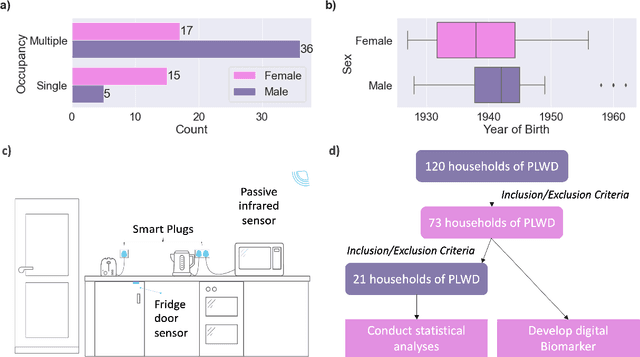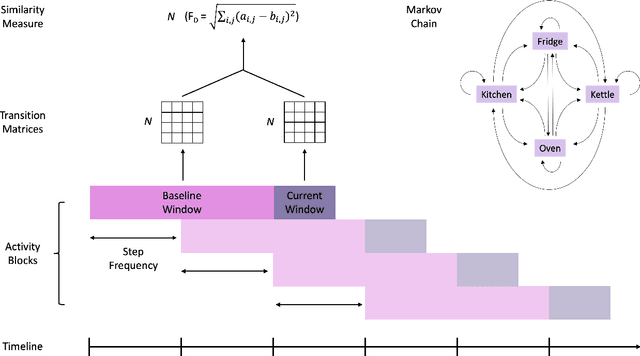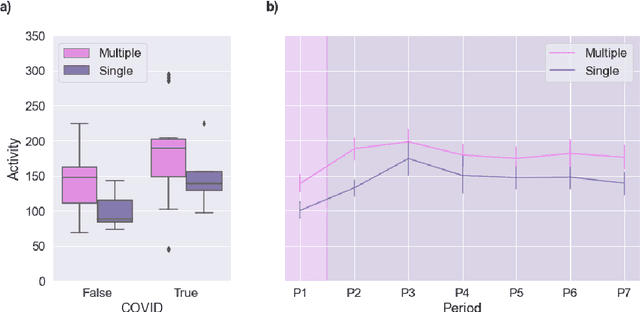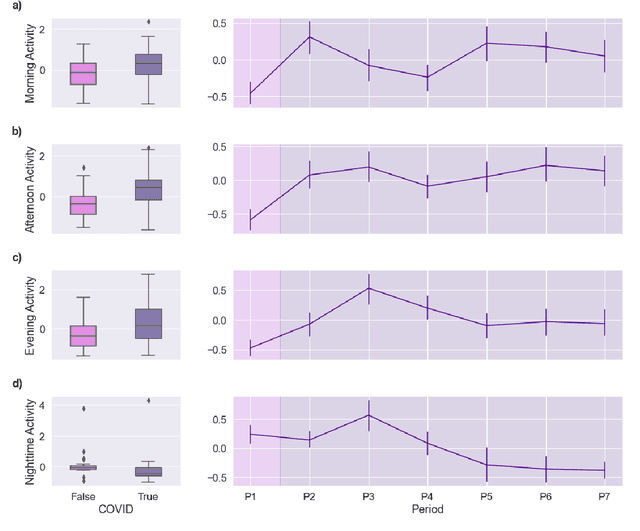Eyal Soreq
A Markov Chain Model for Identifying Changes in Daily Activity Patterns of People Living with Dementia
Jul 20, 2023



Abstract:Malnutrition and dehydration are strongly associated with increased cognitive and functional decline in people living with dementia (PLWD), as well as an increased rate of hospitalisations in comparison to their healthy counterparts. Extreme changes in eating and drinking behaviours can often lead to malnutrition and dehydration, accelerating the progression of cognitive and functional decline and resulting in a marked reduction in quality of life. Unfortunately, there are currently no established methods by which to objectively detect such changes. Here, we present the findings of an extensive quantitative analysis conducted on in-home monitoring data collected from 73 households of PLWD using Internet of Things technologies. The Coronavirus 2019 (COVID-19) pandemic has previously been shown to have dramatically altered the behavioural habits, particularly the eating and drinking habits, of PLWD. Using the COVID-19 pandemic as a natural experiment, we conducted linear mixed-effects modelling to examine changes in mean kitchen activity within a subset of 21 households of PLWD that were continuously monitored for 499 days. We report an observable increase in day-time kitchen activity and a significant decrease in night-time kitchen activity (t(147) = -2.90, p < 0.001). We further propose a novel analytical approach to detecting changes in behaviours of PLWD using Markov modelling applied to remote monitoring data as a proxy for behaviours that cannot be directly measured. Together, these results pave the way to introduce improvements into the monitoring of PLWD in naturalistic settings and for shifting from reactive to proactive care.
Automatic lesion analysis for increased efficiency in outcome prediction of traumatic brain injury
Aug 08, 2022



Abstract:The accurate prognosis for traumatic brain injury (TBI) patients is difficult yet essential to inform therapy, patient management, and long-term after-care. Patient characteristics such as age, motor and pupil responsiveness, hypoxia and hypotension, and radiological findings on computed tomography (CT), have been identified as important variables for TBI outcome prediction. CT is the acute imaging modality of choice in clinical practice because of its acquisition speed and widespread availability. However, this modality is mainly used for qualitative and semi-quantitative assessment, such as the Marshall scoring system, which is prone to subjectivity and human errors. This work explores the predictive power of imaging biomarkers extracted from routinely-acquired hospital admission CT scans using a state-of-the-art, deep learning TBI lesion segmentation method. We use lesion volumes and corresponding lesion statistics as inputs for an extended TBI outcome prediction model. We compare the predictive power of our proposed features to the Marshall score, independently and when paired with classic TBI biomarkers. We find that automatically extracted quantitative CT features perform similarly or better than the Marshall score in predicting unfavourable TBI outcomes. Leveraging automatic atlas alignment, we also identify frontal extra-axial lesions as important indicators of poor outcome. Our work may contribute to a better understanding of TBI, and provides new insights into how automated neuroimaging analysis can be used to improve prognostication after TBI.
 Add to Chrome
Add to Chrome Add to Firefox
Add to Firefox Add to Edge
Add to Edge